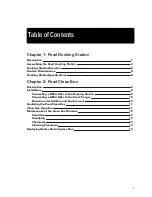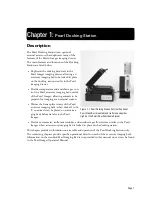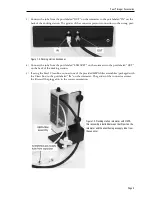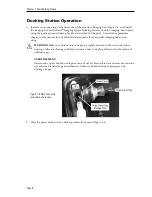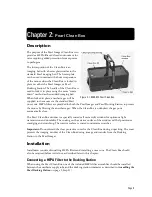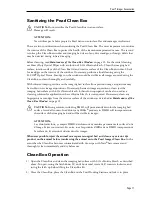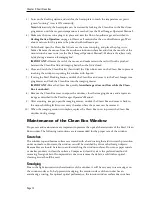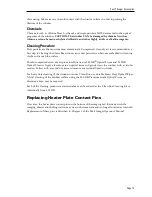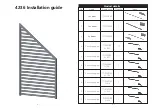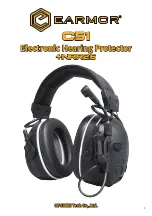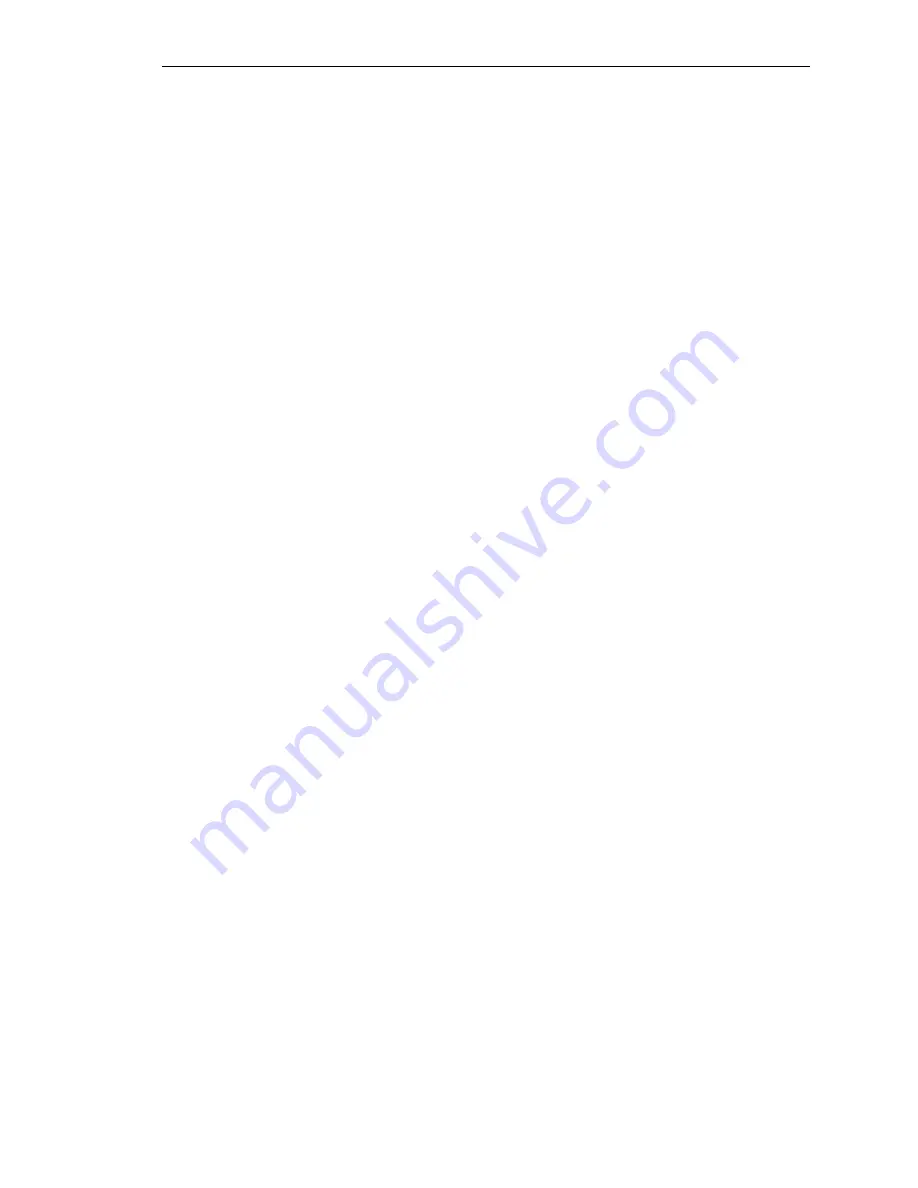
Chapter 2: Pearl Clean Box
3) Turn on the docking station and wait for the heater plate to reach the temperature set point
(green “running” icon is ON constantly).
Note:
Alternatively, the heater plate can be warmed by locking the Clean Box in the Pearl ima-
ging drawer until the set point temperature is reached (see the Pearl Imager Operator's Manual).
4) Make sure the nose cone plug is in place and start the flow of anesthesia gas as described in
on page 6. Observe all cautions for the use of isoflurane gas. Wait
about a minute for the system to be primed with isoflurane gas.
5) Unlatch and open the Clean Box lid, remove the nose cone plug, and place the plug in its
holder. Remove the mouse from the anesthesia induction chamber and slide the muzzle of the
mouse into the nose cone (see the Pearl Imager Operator's Manual).
Make sure the surface is dry
before placing a mouse on the imaging bed.
IMPORTANT:
Observe the tail of the mouse and make certain the tail will not be pinched
between the Clean Box lid and imaging bed when the lid is closed.
6) Close and latch the Clean Box lid, then install the Clean Box cover on the Clean Box to prevent
touching the window or spotting the window with liquids.
7) If using the Pearl Docking Station, undock the Clean Box and move it to the Pearl Imager ima-
ging drawer and lock the Clean Box into the imaging drawer.
IMPORTANT:
Move the Clean Box quickly.
Anesthesia gas does not flow while the Clean
Box is undocked.
8) Remove the Clean Box cover to expose the window, close the imaging drawer, and acquire an
image as described in the Pearl Imager Operator's Manual.
9) After acquiring images, open the imaging drawer, undock the Clean Box and move it back to
the mouse holding facility or recovery chamber where the mouse can be removed.
10) When the imaging session is complete, replace the Clean Box cover to protect the Clean Box
window during storage.
Maintenance of the Clean Box Window
Proper care and maintenance are important to preserve the optical characteristics of the Pearl Clean
Box window. The following instructions are recommended for the proper care of the window.
Scratches
The window top and bottom surfaces are treated with a hard coating that aids in scratch prevention
under normal use. However, the window can still be scratched by dirt or other foreign objects.
Reasonable care should be taken to avoid scratching the window surfaces. Do not use paper towels
or similar products to clean the surfaces. Compressed, clean dry air is the preferred method of
removing foreign debris. If compressed air does not remove the debris, a soft lint-free optical
cleaning tissue should be used.
Smudging
Due to the light transmission characteristics of the window, it will be very easy to see smudges on
the window surfaces. To help prevent smudging, the exterior surface of the window has an
anti-smudge coating. For optimal optical performance, the interior window surface does not have
Page 12
Summary of Contents for 5700-DS
Page 1: ...Pearl Trilogy Accessories Manual...
Page 2: ......



